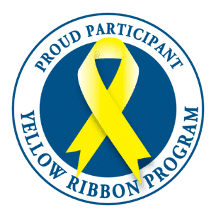Master of Health Science Physician Assistant Studies Asheville
Discover
Our Master of Physician Assistant Studies is designed to prepare you for physician assistant (PA) practice in just 27 months. In the first 15 months, you’ll build a solid foundation in patient assessment, clinical medicine, and the medical, behavioral, and social sciences. In addition to attending lectures, you’ll complete problem-based learning, practical hands-on clinical labs, clinical simulation assessments, and more. Along the way, you’ll also develop strong patient communication skills and advanced critical-thinking and problem-solving clinical skills. In the last 12 months, you’ll complete 8 clinical learning rotations divided into 6-week blocks, providing you with experience in a variety of in- and out-patient settings and specialties. You’ll also complete a clinical review course and a clinical research capstone project, helping equip you for your future as a healthcare provider. A Physician Assistant or (PA) works with a physician in a variety of clinical settings. Physician Assistants are trained to assess healthcare issues, to perform physical exams, provide preventative care, to counsel behavioral health issues and to diagnose and treat acute and chronic illnesses and injuries. There are over 100,000 practicing Physician Assistants serving in private practice, in the military and federal government, in clinics and hospitals, community and rural clinics and hospitals and overseas. A favorable national climate, support from government policy makers and the medical establishment, plus creative planning on the part of early leaders were all key factors in the successful introduction and the growth of the Physician Assistant concept. Program offered at the following locations Asheville Atlanta Knoxville Nashville Physician Assistants improve access to medical care by expanding a physician’s practice base, which is especially important in medically underserved areas. The majority of PAs are employed in primary care specialties, such as family practice, pediatrics, and general medicine. PA practice settings are varied and are influenced by many forces in the medical marketplace, including but not limited to: The availability of positions formerly held by foreign medical graduates; The substantial economic advantages of physician assistant health manpower; The ability of Physician Assistants to adapt to a variety of clinical settings; The increasing need for primary care especially in rural and urban settings; The decrease in certain graduate medical education programs; The limitations on the number of hours that post graduate physicians are permitted to work; The legacy of Physician Assistants in providing cost-effective, efficient health care; The documented focus of Physician Assistants on patient satisfaction; The increasing demand for assistance with innovative medical technology; The use of Physician Assistants globally.
Develop Essential Skills In
- Evidence-based patient care
- Interpersonal interaction and communication
- Professional behavior
- Clinical and technical competencies
- Clinical reasoning and problem-solving
Bureau of Labor Statistics
Tuition and Fees
Available Locations
Concentrations in this Program
Ready For Your Next Step?
You May Enjoy This Line of Study If You…
-
Want to improve lives through healthcare -
Commit to evidence-based and patient-centered practice -
Establish good relationships with patients and co-workers -
Have strong clinical reasoning, problem solving, and communication skills -
Act in a professional, caring, ethical, and culturally competent manner
Additional Information
Accreditations
The ARC-PA has granted Accreditation-Provisional status to the South College Asheville Physician Assistant Program sponsored by South College. Accreditation-Provisional is an accreditation status granted when the plans and resource allocation, if fully implemented as planned, of a proposed program that has not yet enrolled students appear to demonstrate the program’s ability to meet the ARC-PA Standards or when a program holding Accreditation-Provisional status appears to demonstrate continued progress in complying with the Standards as it prepares for the graduation of the first class (cohort) of students. Accreditation-Provisional does not ensure any subsequent accreditation status. It is limited to no more than five years from matriculation of the first class. The program’s accreditation history can be viewed on the ARC-PA website at http://www.arc-pa.org/accreditation-history-south-college-asheville/.
Got A Question? South College Frequently Asked Questions
What is the tuition for South College?
Tuition and fees for South College students vary by program, and tuition rates are tiered based on the number of credits taken each quarter. For example, in our undergraduate programs, students taking 10-20 credits per quarter are charged one quarterly tuition rate based on their program, while students in the same program taking 1-5 or 6-9 credits are charged different tuition rates. Our tuition rates are designed such that South College students who take a high number of credits per quarter may be able to complete their program at a lower total cost than students who take fewer credits per quarter. Contact our admissions team who can help you prepare the budget for the field of study you want to pursue. And don’t forget we also offer numerous grants, scholarships, and financial aid packages to those that qualify.
More InfoDoes South College offer Financial Aid?
Yes! Financial aid for South College is available to those who qualify. Students at South College have access to a range of financial aid to provide the economic assistance they need to pay for college. Aid is available in the form of scholarships, grants and awards, work-study programs, and loans. We’re happy to participate in numerous federal, state, and private student aid programs, and to offer funding directly. In addition to federal and state financial aid, South College institutional grants can reduce out-of-pocket expenses for qualified military-affiliated students, first responders, and recent high school graduates. Visit our financial page or contact our admissions team. We want you to succeed! Let us help you give your dream direction and address your financial aid questions.
More InfoIs South College Accredited?
Yes! South College is accredited by the Southern Association of Colleges and Schools Commission on Colleges (SACSCOC) to award degrees at the doctorate, educational specialist, master's, baccalaureate, and associate levels, as well as certificates. With over 100 programs and concentrations and campuses on multiple states the state authorizations have been obtained. Visit the link to see the full listing. It is the student’s responsibility to contact the appropriate licensing board to confirm whether a South College program will meet the requirements for professional licensure in that state. South College will assist with this information for fully online programs. For onground/hybrid programs, the institution ensures that the program meets requirements for the state in which the campus is located.
More InfoHow do I apply to South College?
Visit South College and see for yourself what the college has to offer. Campus tours include a personal admissions consultation, campus facility tour and more! When you are ready to start your journey at South College, submit an online application or speak with an admissions representative. Once your application is received, we will begin building your personalized plan to pursue the chosen degree or certificate program based on your interest. We want you to have the best possible educational experience. To learn more about the educational opportunities available for your future, Apply today!
Apply NowDo you Offer Housing?
South College offers a wide range of degree and certificate programs in areas such as business, healthcare, legal studies, education, criminal justice, and technology. At this time, we do not currently offer housing options. Our expansive online study and hybrid options allow our students to learn wherever they are located, and often with the flexibility of their own convenient time. With academic advisors that support the students throughout their tenure at South College, along with tutors, study groups, and a student success team, students at South College have resources at their fingertips to assist them in their educational pursuits and may be able to guide towards housing areas close to the campus of their choice. The individual attention and support provided by our faculty and staff helps to set us apart. Students interested in a more personalized learning experience are often attracted to South College over other larger universities and colleges in our campus locations. Request more information about South College today!
More InfoLooking for South College Consumer Information?
South College was founded in 1882 and focused on serving students who want a hands-on, relevant education that can have a meaningful impact on their lives. South College strives to provide quality instruction, resources, and support services based on systematic and ongoing assessment and evaluation of objectives/outcomes to ensure the development of student abilities necessary for the achievement of positive student outcomes and the mission/vision of the college. The institution establishes policies and procedures to maintain compliance with applicable federal, state, and accrediting requirements. Click below to learn all about South College’s history, and who we are as an institution today.
More InfoDoes South College accept Transfer Students?
Yes! Credit for transfer work may be given if it was taken at an accredited collegiate institution, if it is equivalent to courses offered at South College, and if it carries a grade of C or better. Any coursework taken over seven years ago may be denied transfer credit if the material is outdated. Policies for the acceptance of any graduate level transfer credit are determined by the associated program faculty within guidelines determined by the institution. We want students to succeed and will do our best to help you in your journey to apply transfer credits to those who qualify. Contact admissions for assistance for your transfer individualized plan and consideration and learn about transfer specifications and time limits by course here:
More InfoWhat Kind of Certificate & Degrees does South College Offer?
South College is a regionally accredited private co-educational, institution with non-residential campuses in Knoxville and Nashville, Tennessee; Asheville, North Carolina; Atlanta, Georgia; Indianapolis, Indiana; Pittsburgh, Pennsylvania and Orlando, Florida. Students can pursue academic programs at all levels, including professional certificates and associate, bachelor’s, master’s, and doctoral degrees. New academic programs are added frequently in response to local, regional, and national employment trends, and South College is committed to providing programs at all levels with innovative course content and teaching platforms. Explore all the programs and come back often as we regularly add new programs that may spark your interest!
More InfoOnline vs On-Campus – What Is Best?
Since its founding 140 years ago, South College‘s mission has been to serve students who want a hands-on, professional focused education. Today this means offering traditional classroom experiences along with accelerated, hybrid, and online learning options. It means small class sizes, modern labs, and campuses that are convenient to large numbers of students. Most of all, it means experienced instructors who provide real world experiences in their classes and lead in-depth discussions on the concepts taught. South College also offers non-traditional distance-learning programs, allowing students to earn a college degree online providing more flexibility with the same level of quality education and experience from all academic programs offered. This option is great for potential students who are working a full-time job or are not in travel distance to one of the learning sites. Online vs. campus? You decide. Get the student experience you desire in the program that fits your style best on your road to success!
More InfoDoes South College Have Programs for Active or Retired Military?
As an institution of higher education, South College recognizes its responsibility to society and supports both institutional and individual commitments to service. South College encourages its administration, faculty, and staff to invest their knowledge, experience, and expertise in community, professional, and institutional service. South College’s core values of excellence, responsibility, and integrity serve as the foundation for assessing the quality of institutional, school/departmental, and individual performance in achieving this mission. South College is grateful for the service and sacrifice of our military and their families. We are happy to provide the South College Military Grant to support our military – past and present – in the pursuit of their education and skill development. The South College Application Fee is waived for all active-duty military members, veterans, their spouses, and their dependent children who receive this Grant.
More Info

